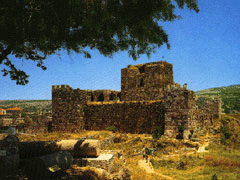

: GUIDE INFO :
- About Us
- Contact Us
- Social Media
- F.A.Q
- Plans
- Albums
- News & Events
- Get A Website
- Marketing Tips
- Useful Links
- International Links
: HOTELS DIRECTORY :
- Beirut Hotels
- Bekaa Hotels
- Mount Lebanon Hotels
- North Lebanon Hotels
- South Lebanon Hotels
: LEBANON INFO :
- Transportation In Lebanon
- Touristic Sites
- Featured Resorts
- Resorts>
- Grottos
- Embassies in Lebanon
- Photo Gallery
- Articles About Lebanon
- Songs About Lebanon
: SISTER SITES :
- AtLebanon Directory
- Advertise Lebanon
- Professional Innovations
- Lebanon Auto Guide
- Bcharre Chalet & Motel
: GOOGLE ADS :
|
» BYBLOS CITY LEBANON
 Byblos is one of the top contenders for the "oldest continuously inhabited city" award. According to Phoenician tradition it was founded by the god El, and even the Phoenicians considered it a city of great antiquity. Although its beginnings are lost in time, modern scholars say the site of Byblos goes back at least 7,000 years. Ironically, the words "Byblos" and "Phoenicia" would not have been recognized by the city's early inhabitants. For several thousand years it was called "Gubla" and later "Gebal", while the term "Canaan" was applied to the coast in general.
Byblos is one of the top contenders for the "oldest continuously inhabited city" award. According to Phoenician tradition it was founded by the god El, and even the Phoenicians considered it a city of great antiquity. Although its beginnings are lost in time, modern scholars say the site of Byblos goes back at least 7,000 years. Ironically, the words "Byblos" and "Phoenicia" would not have been recognized by the city's early inhabitants. For several thousand years it was called "Gubla" and later "Gebal", while the term "Canaan" was applied to the coast in general.
It was the Greeks, some time after 1200 B.C., who gave us the name "Phoenicia," referring to the coastal area. They called the city "Byblos" ("papyrus" in Greek), because this commercial center was important in the papyrus trade. Today Byblos (Jbeil in Arabic) on the coast 37 kilometers north of Beirut, is a prosperous place with glass-fronted office buildings and crowded streets.Within the old town, medieval Arab and Crusader remains are continuous reminders of the past. Nearby are the extensive excavations that make Byblos one of the most important archaeological sites in the area. History:  About 7,000 years ago a small Neolithic fishing community settled along the shore and several of their monocular huts with crushed limestone floors can be seen on the site. Many tools and weapons of this stone age period have been found as well...
About 7,000 years ago a small Neolithic fishing community settled along the shore and several of their monocular huts with crushed limestone floors can be seen on the site. Many tools and weapons of this stone age period have been found as well...
For more info please visit: Ministry of Tourism |
|










 Lebanon Auto Guide
Post,Buy your car.
Lebanon Auto Guide
Post,Buy your car.
 Chalets & Loding Rooms
One of Besharry/Al-Arz Tourists Destination
Chalets & Loding Rooms
One of Besharry/Al-Arz Tourists Destination